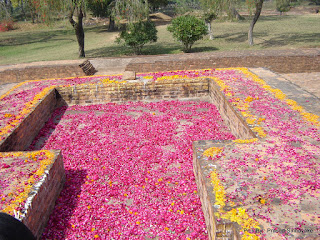It is said that for all Buddhists during their life to visit the four main places
Lumbini – the birthplace of Buddha
Bodhgaya – where Buddha attained enlightenment
Sarnath – where Buddha gave his first discourse of Dhamma to the world
Kushinagar – place of Buddha’s Maha Parinibbana
We had a life time opportunity to visit India (Dambadiva) in March 2012 all the way from Sri Lanka as a Buddhist pilgrim. India is the birthplace of Buddhist religion and when you visit there, still we can feel the sense of Buddha. It was a 8 days tour and the time is not enough to visit each and every religious places but any how we worshiped all the important places with a busy schedule. Buddhagaya, Varanasi and Sravasti are the most interesting places for us and we would like to visit these places again if possible. We had realized that we are still living in Gautama Buddha era and we should try our best to follow the path shown by Buddha in his teachings.
For your information we have decided to create this web site and publish the experience that we gathered. Most of information and knowledge gathered are based on our tour guide and the buddhist monks we met on this pilgrimage. Also we have gathered some several informations from websites and youtube videos as well. My thanks to respective owners of such videos on you-tube.
We hope this web site about Dambadive is informative and useful for you to get understanding of theses places or for your future visits to Dambadiva.
All the pictures publish on the web albums are Geo-tagged. Click on photo detail to see location details.
Your comments are mostly welcome.






















